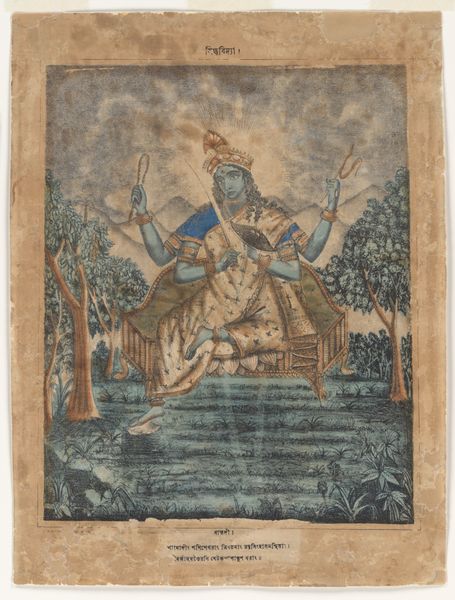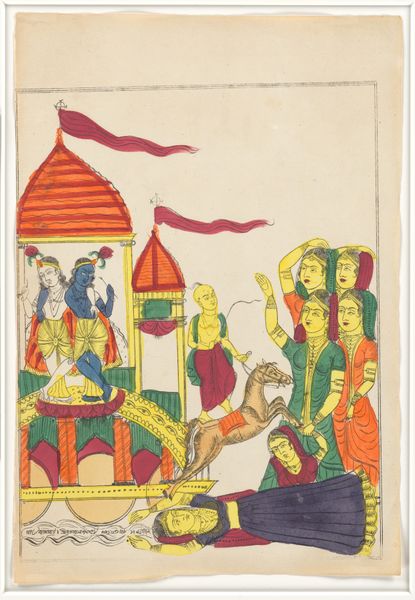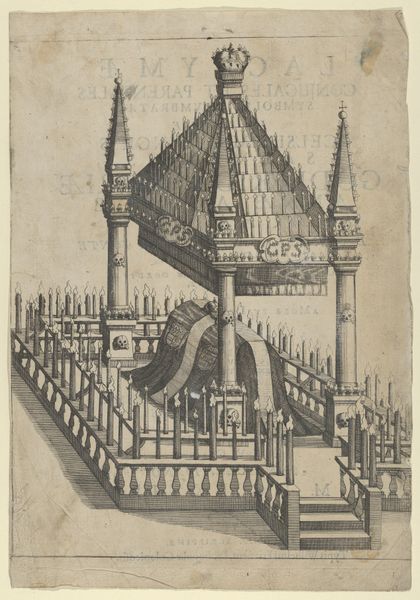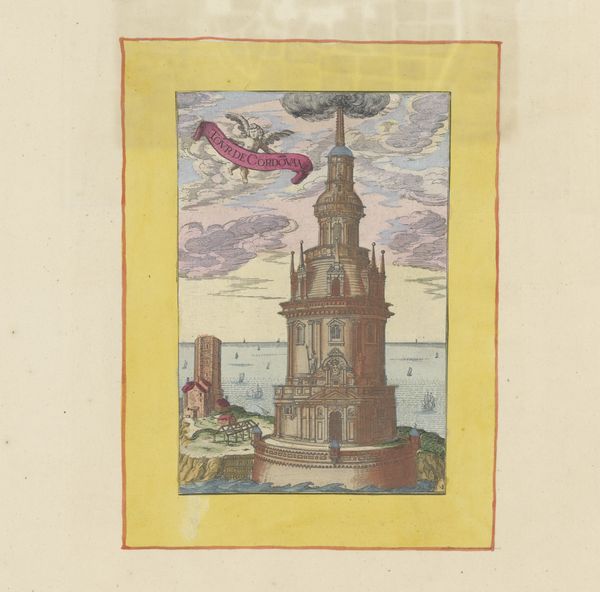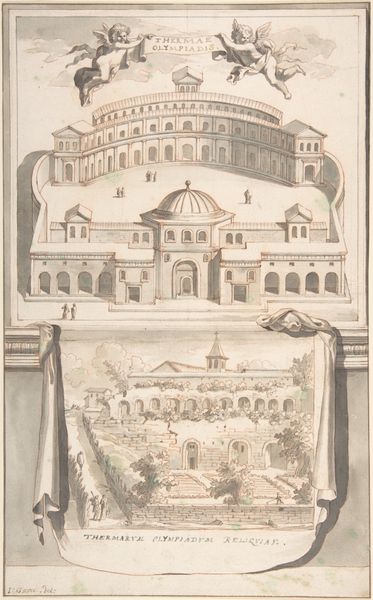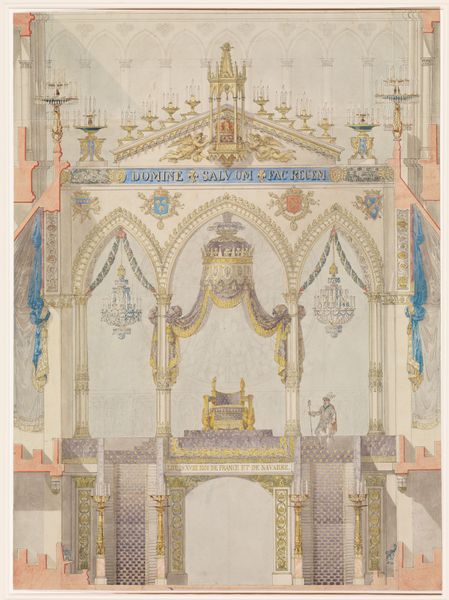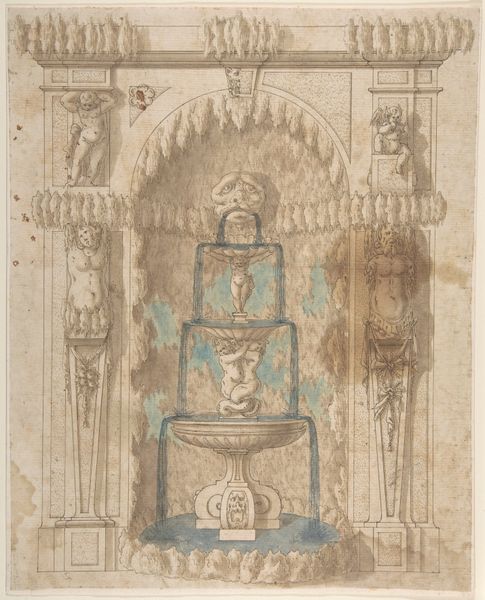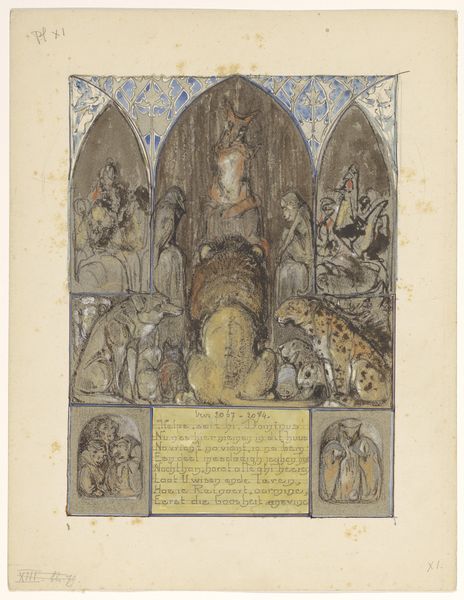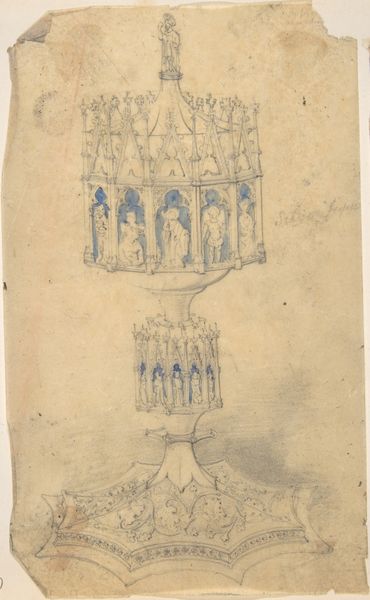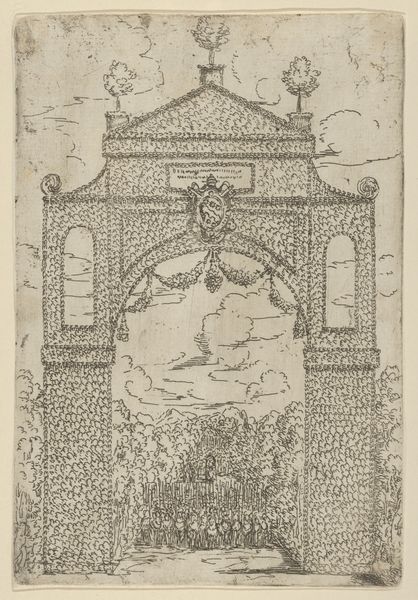
drawing, coloured-pencil, painting, print, paper, watercolor, ink
#
drawing
#
coloured-pencil
#
painting
# print
#
asian-art
#
figuration
#
paper
#
personal sketchbook
#
watercolor
#
ink
#
coloured pencil
#
watercolor
Dimensions: Sheet: 15 5/8 × 11 7/8 in. (39.7 × 30.2 cm)
Copyright: Public Domain
Curator: Welcome. Today, we are examining "Goddess Dhumavati," a work made with ink, watercolor, colored pencil, and paper between 1865 and 1895 by Sasadhar Banarjee. Editor: It's instantly striking. The colors are muted, almost ghostly. There’s a central architectural form, and the female figure dominates the structure; a feeling of unease pervades, yet with a sense of power, doesn't it? Curator: Precisely. As a part of the Dashamahavidya goddesses, Dhumavati embodies themes of widowhood, poverty, and unfulfilled desires. The goddess’s representation is directly tied to societal marginalization, the negative aspects of womanhood and the fears and prejudices surrounding those who defy traditional roles. Editor: How do the stylistic choices amplify those readings? The way the woman is situated on the architectural structure looks a little precarious to me; she seems ready to topple off, which adds to the unsettling vibe. What does the context of imagery like this tell us about the socio-political climate in which this piece was produced? Curator: Absolutely, the off-kilter composition symbolizes disruption and societal imbalance. Moreover, works like these give form to abstract anxieties and biases that have roots in real material and political conditions. Dhumavati becomes a visual embodiment of those collective anxieties regarding gender, class, and caste during the British Raj era. Editor: It sounds like understanding Dhumavati as an archetype is useful for deciphering cultural norms from this period. I wonder to what extent did visual representations challenge or reinforce those stereotypes? Curator: Exactly, and this specific artwork creates a crucial space for examining those tensions. It's not merely replicating but actively engaging with and visualizing resistance within socio-political frameworks. Editor: So, while at first glance the painting elicits this feeling of discomfort, deeper engagement reveals layers of complex social commentary on disenfranchisement and even defiance against strict societal limitations. I won’t view similarly themed works the same after seeing this piece. Curator: It's rewarding to have those expectations unsettled. This is why looking at artwork like this can transform our relationship with historical art; they teach us to think differently about its role in history, helping to understand complex themes and power relations that are always with us.
Comments
No comments
Be the first to comment and join the conversation on the ultimate creative platform.
